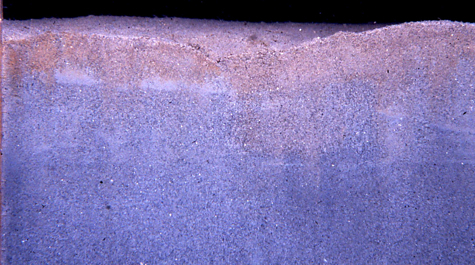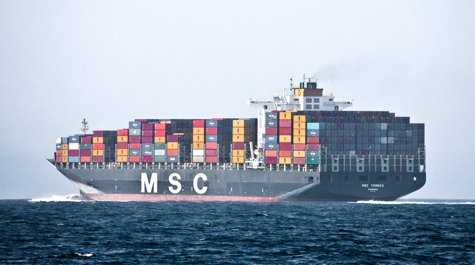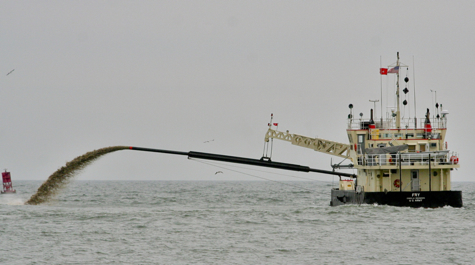Study can help minimize impact of dredge spoils
Dredging of navigational channels in Chesapeake Bay is crucial to maintaining Virginia's role as a leading gateway for international shipping, particularly with the advent of deeper-draft container vessels. A new study by VIMS professor Linda Schaffner provides data that can help future in-water disposal of dredge spoils proceed with minimal environmental impact.
The study, published in the on-line edition of Estuaries and Coasts, shows that bottom-dwelling sea life is little affected when buried by fewer than 6 inches of dredge spoils, and that communities buried beneath thicker layers typically re-establish themselves within 18 months through re-colonization from nearby, unaffected areas.
The worms, clams, and other invertebrates that live on and in the seafloor play a key role in supporting the Bay food web, providing meals for striped bass, blue crabs, and other commercially and recreationally important species.
Schaffner conducted the two-year study in the Wolf Trap Alternate Open Water Disposal Site, which occupies about 3 square miles in the lower Bay between Mathews County and the Eastern Shore. The Army Corps of Engineers designates the site for disposal of non-toxic materials dredged from the navigation channels that lead deep-draft vessels toward the Port of Baltimore and other ports in upper Chesapeake Bay.
Schaffner compared the number and kinds of species and individuals in the dredge disposal area with nearby sites that were spoils-free. Her goal was to determine how the thickness of disposed sediment affected the patterns and rates of recovery within the bottom-dwelling, or "benthic," community.
Her results showed that benthic communities recovered to "normal" conditions fairly quickly, particularly when the depth of sediment deposited at the disposal site is relatively shallow. Sites buried by 6 inches or less of dredge spoils were minimally affected, with many of the organisms able to burrow back up to the surface. Schaffner notes that these organisms likely evolved this ability in response to frequent burial by tides and storms in lower Chesapeake Bay.
With deeper burial, beneath more than 6 inches of sediment, it took 1.5 years or less for the study sites to converge with reference sites in terms of species richness, abundance, biomass, and community composition. Recolonization via immigration from nearby areas was apparently more important for re-establishing benthic communities than upward migration of animals through the new sediment layers.
Schaffner's results suggest that "thin-layer disposal" of clean material (defined by the U.S. Army Corps of Engineers as placement of overburdens less than a foot thick) will have little long-term impact on benthic communities within estuaries like Chesapeake Bay. She cautions, however, that the dredged material in this case was non-toxic; other impacts to benthic communities might be found if the disposed sediments contained high concentrations of contaminants. She also cautions that further study is needed to gauge the potential effects of the thin-layer disposal on other types of benthic habitats.
Schaffner also observed longer-term trends in biodiversity and recruitment events across the study region and suggests that climate variability may also influence recovery patterns and rates for benthic communities in this region of the estuary.
Predicted increases in ship size and traffic in the coming decades means that dredging of navigational channels in Chesapeake Bay is likely to increase. The Virginia Port Authority (VPA) predicts that containerized cargo volume will triple during the next 20 years, and that container ships will continue to get bigger, with the need to deepen the existing 50-foot Chesapeake Bay shipping channels by another 5 feet. The largest container vessels now stretch 1,300 feet with a draft of 51 feet.
A 2006 study by William and Mary's Mason School of Business (pdf) showed that VPA terminals handled 16.3 million tons of cargo valued at $36.1 billion in FY 2006. The study put the Virginia economic impact of the VPA port operations at $4.5 billion in revenues supporting 35,665 jobs earning compensation of $1.6 billion.






